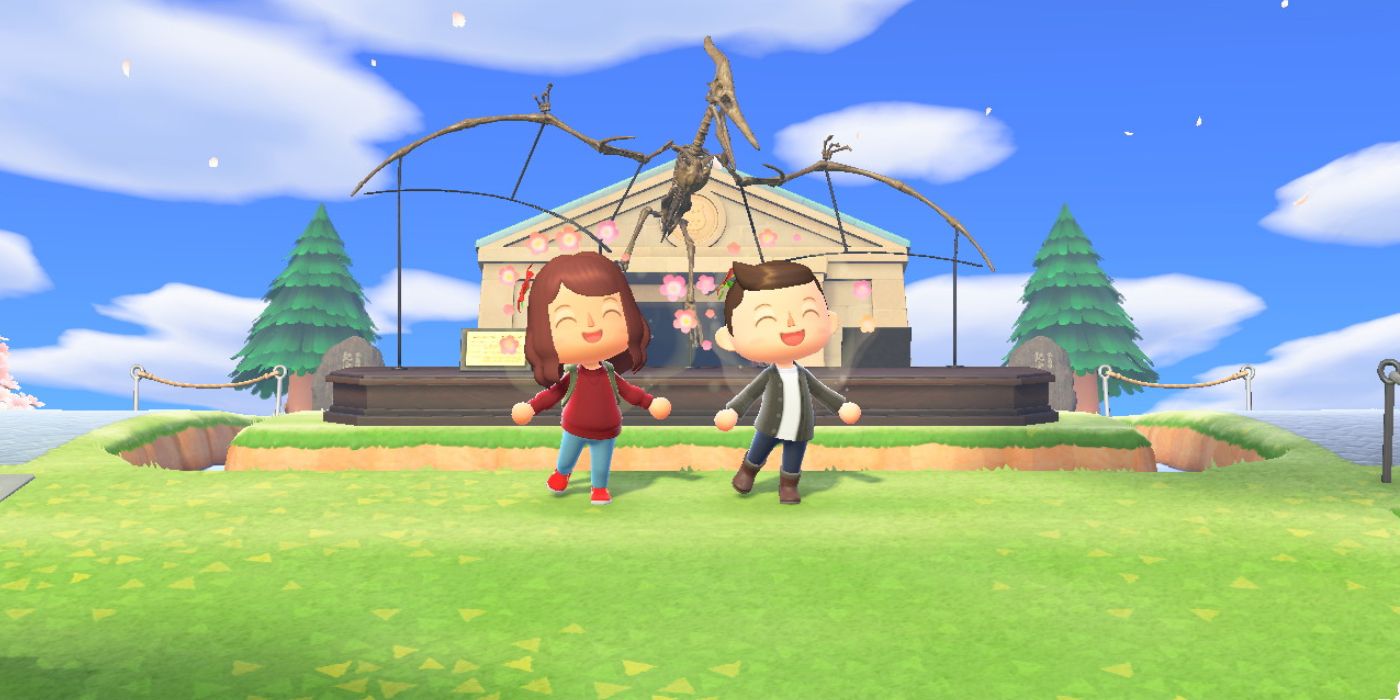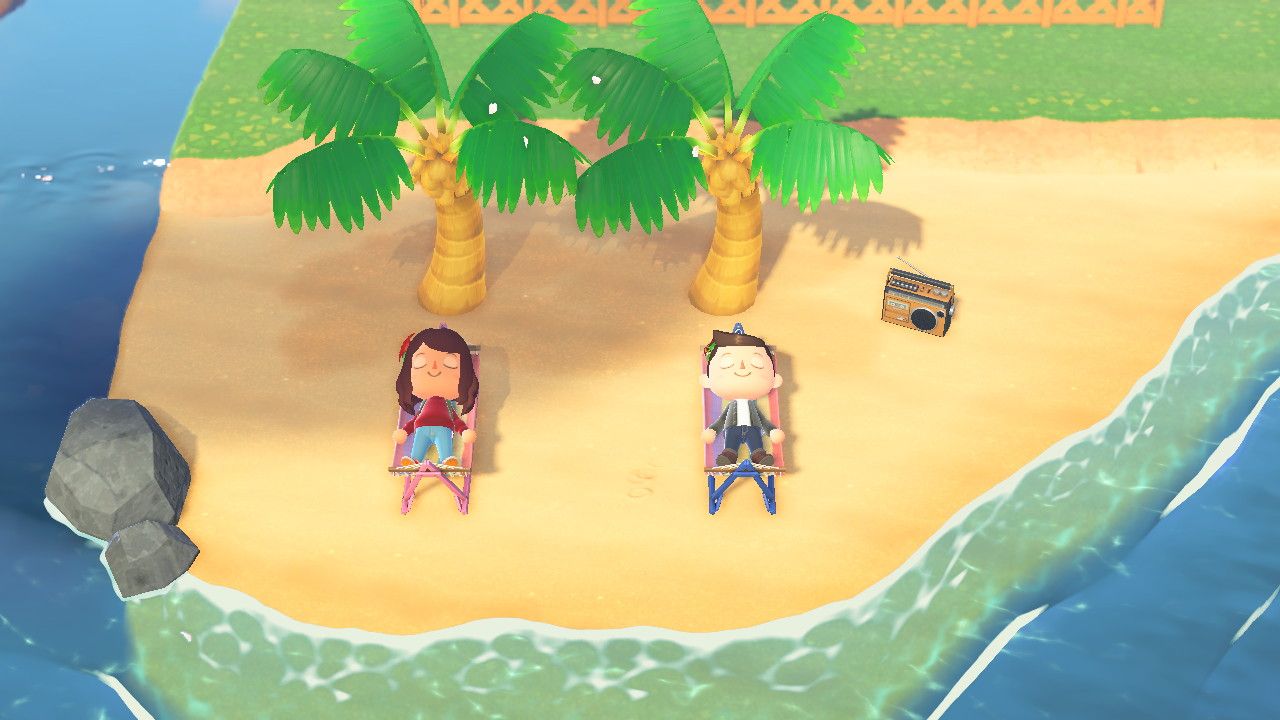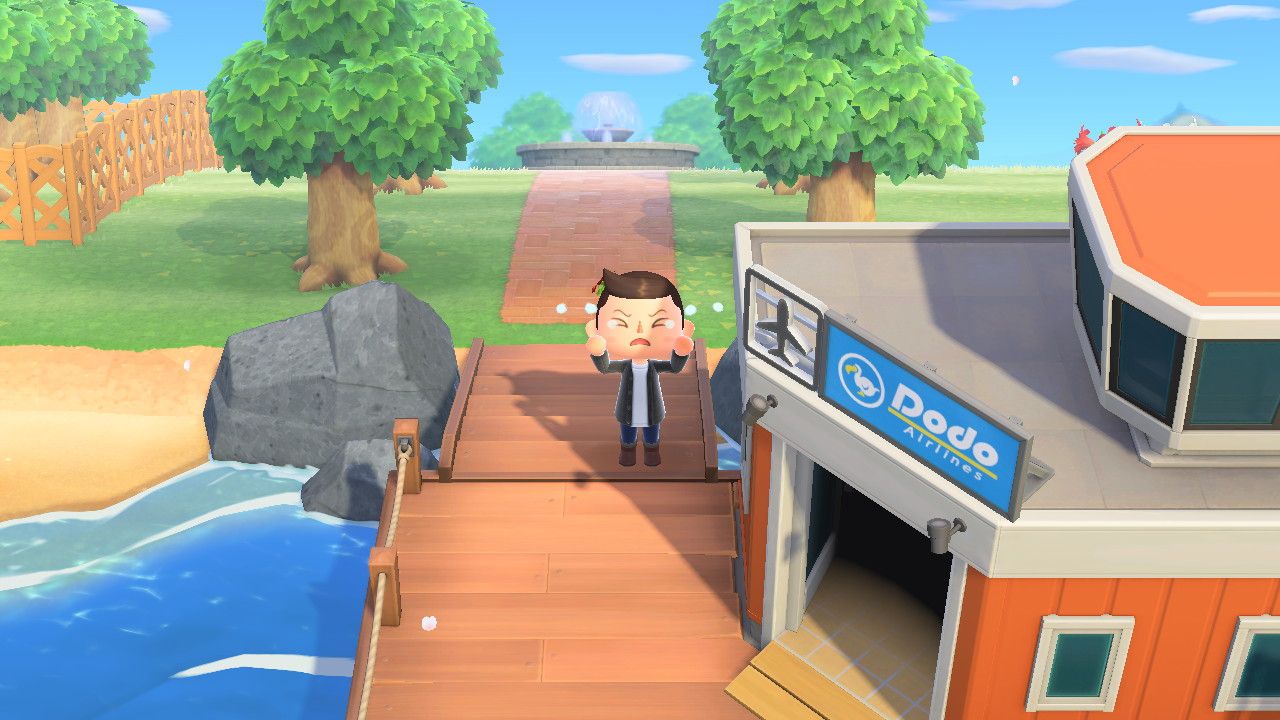Nintendo's Animal Crossing: New Horizons has been a social godsend in the wake of schools, workplaces, and major events like E3 shutting down as a result of the coronavirus pandemic. While many are self-quarantined to mitigate the spread of disease, not a day seems to go by without stories coming out about couples holding their cancelled weddings in Animal Crossing, or friends gathering together to play games within the game. The series has always encouraged players to spend time with others so they can show off furnished homes and museum collections, but New Horizons takes things a step further.
The addition of features like outdoor decorating and the prospect of updated content throughout the year has given the newest Animal Crossing game a long shelf life, and no doubt players will continue to play with their friends, to show off decor, and offer up access to different shops on their once-deserted island. Its online functionality is also rather impressive (for a first-party Nintendo game), allowing for eight-person multiplayer sessions on any island at any given time.
However, one area that has garnered Animal Crossing: New Horizons flak is its strange handling of local co-operative features. When it was first revealed that each Nintendo Switch can only host one island, meaning multiple players on one device would have to share the space, there was widespread skepticism and pre-emptive disappointment that led to review bombing on Metacritic. Now that the game has been out for a few weeks, it's fair to say there are baffling design decision that hold New Horizons' local co-op back from being something truly great, things that could potentially see adjustments going forward.
What Animal Crossing New Horizons' Local Co-Op Gets Right
Animal Crossing: New Horizons allows for up to four-player local co-op on each Nintendo Switch. Where the game succeeds in creating an interesting experience most is in how relatively seamless it is to transfer control between those players. The Switch's built-in multiple account system makes it easy for different players to log in, and from there the Call Resident app allows a second player with a home on the island to simultaneously play with a separate controller.
With multiple users on one Switch the first player is considered the leader, while the called resident has a simplified presence: They can only access tools, they are automatically teleported when caught off-screen, and anything they collect goes to the recycle box in Resident Services. What makes this limited multiplayer presence in Animal Crossing: New Horizons work is that the leader can shake their Joy-Con or access a menu at any time that allows them to swap roles, right down to the former follower having their full inventory from the last time they logged in.
This system could undoubtedly be more robust if the developers allowed for split screen between multiple fully-fledged players, but it was likely decided to keep things contained to one screen at all times given the mobile facet of Nintendo's hybrid console. With that constraint in mind, the easy leader swapping system is a convenient and well-designed solution.
Another key success in New Horizon's local co-op system is how it affects the narrative end of the life simulation and helps create a living world. The CPU villagers tend to talk about other humans who live on a shared island more than visiting friends, discussing everything from their passport title and favorite foods to their propensity for planting money trees. Multiple players also receive different random items to decorate their homes from villagers and shooting down balloons. These factors go a long way toward building an immersive atmosphere to sink hundreds of hours into.
What Animal Crossing New Horizons' Local Co-Op Gets Wrong
The major problem with local co-op in New Horizons boils down to the permissions afforded to different residents. Only the person who opens a new save file and goes through the busywork of following Tom Nook's tutorial is given the "Resident Representative" distinction. For all intents and purposes they are the main character of the story, even if that story is simply a number of larger tasks which need to be completed in order to unlock new buildings, tools, and receive a three star rating to begin terraforming.
Anyone who joins after this first player is treated like a second-hand citizen, as if the game were designed under the assumption that every "Player Two" is a younger sibling who should not be allowed to advance the game without their older sibling's say. For instance when Tom Nook asks players to furnish three houses for new animal villagers toward the beginning of the game, only the Resident Representative is given the DIY recipes to craft items necessary for completing this quest. Secondary players can help gather resources alone, but are unable to help beyond that.
What makes this gatekeeping of permissions especially bizarre is how inconsistent it is. Players who are not the Resident Representative have a direct say in quite a few things: They can invite new villagers from Nook Miles Ticket islands, independently terraform when that function is unlocked, and advance certain quests like providing supplies to build Nook's Cranny. The game also keeps track of which players donate what critters and fossils to Blathers at the museum. Why then are they unable to get all the same tutorial-dependent items and event triggers as the first player?
The local co-op functionality of Animal Crossing: New Horizons also bristles against its online multiplayer. Players can not use the Call Resident app when inviting friends over to see their recreations of locales like Pokemon's Pallet Town, despite one of the game's biggest selling points being its ability to have eight players on one island. Perhaps the designers restricted this function because they felt it would be awkward if a visiting friend saw someone teleport to follow their leader. However that only furthers the criticism that a more robust split screen mode for local co-op would have been a worthwhile investment.
With content for New Horizons planned to be released throughout the year, and a precedent set by the developers applying an update to fix the overabundance of Bunny Day eggs, there's room for Nintendo to work on a better couch co-op system that is less restrictive on players who happen to put down the second, third, or fourth house on a given island. As it stands this entry into the Animal Crossing series is a fantastic online experience that happened to drop at the perfect time in history, but it's much less paradisiacal for anyone looking to share that experience with a sibling, roommate, or partner.
Animal Crossing: New Horizons is available now, exclusively on the Nintendo Switch.



